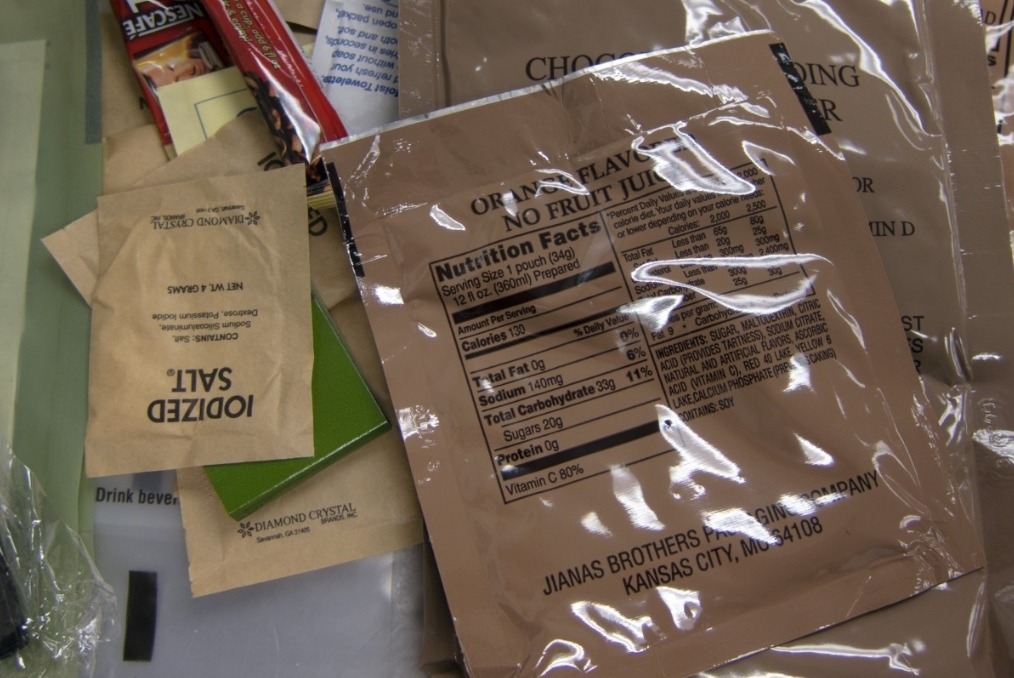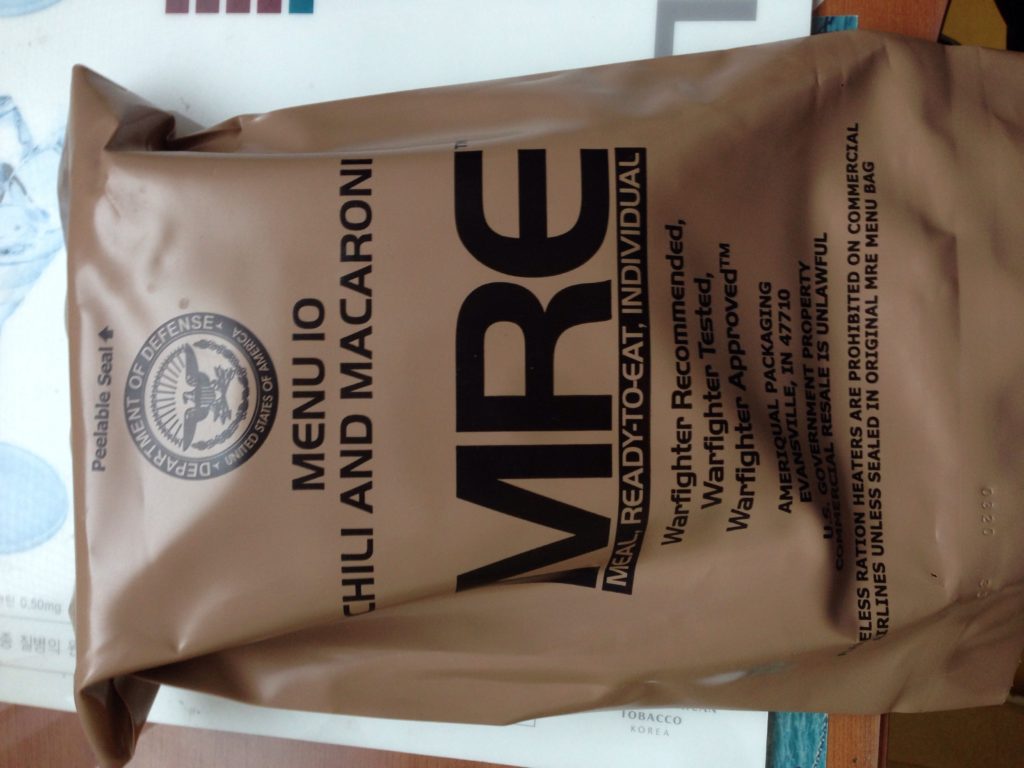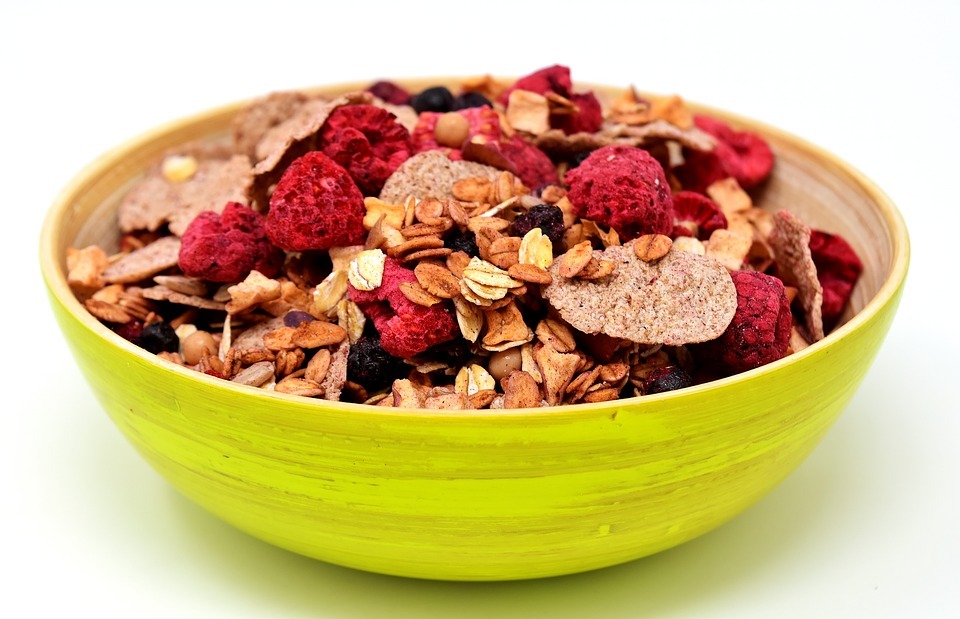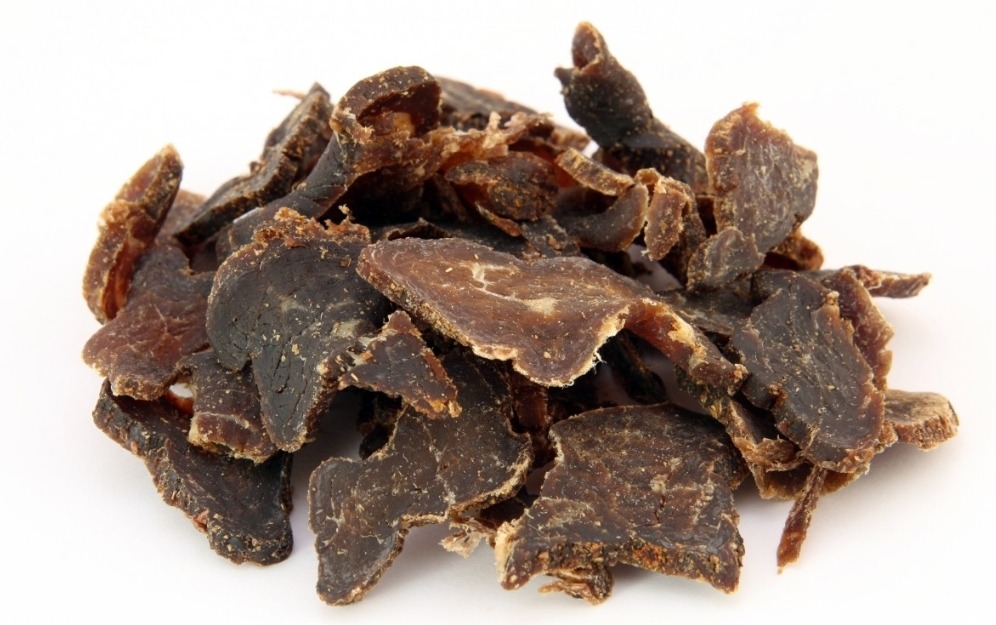What are the best hiking food packs? Should I buy them or should I create them myself? Should I bring ingredients or complete meals? Are military MRE’s any good for hikers? In this article I will answer all these questions as good as possible.

Maintaining a varied diet on the trail can be difficult if frequent resupplies are not possible. You would have to carry every meal in your backpack, these meals should be nutritious and last for a long time (without spoiling). The military has their own meal packs (MREs). Civilians can buy these as well. You could also buy dehydrated meals from companies that focus on hikers and climbers. Finally, you could decide to create your own hiking food packs. Let’s find out what your best option is.
PS: Click here if you are only interested in examples of hiking food packs.
What’s important for a hiking food pack
Whether you plan on making your own hiking food packs or buy them, there are a couple of things to keep in mind. Let’s take a look.
Calorie density
When you are out hiking, you will burn a crazy amount of calories. Especially if you are doing a lot of miles on a difficult trail in warm weather. You have to replace those burned calories.
The room inside our backpack is obviously limited, so we want to get a lot of calories without using too much volume (and also weight). Food with low volume, low weight and high calories is optimal (= calorie dense food).
For example: peanut butter has 588 calories per 100g and yoghurt has 58 calories per 100g. You get more than ten times the amount of calories by carrying the same weight if you choose peanut butter instead of yoghurt.
That said, calorie density is not the only thing you should look at. Otherwise, you would end up with a very unbalanced diet.
Macronutrients
Except for providing a lot of energy (= calories), a meal should also be balanced and nutritious. Our body needs a combination of certain types of food in order to function properly.
Macronutrients are chemical elements that humans consume/need in the largest quantities and can be split up in three main groups: protein, carbohydrates and fat.
Your body needs a mix of protein, carbohydrates and fat. Every group has its own equally important function.
I always try to get 30% from your calories from protein, 45% from carbs and 25% from fat while hiking. These are just numbers to aim for. I’m obviously not going to measure and calculate every snack that I eat, but I will make rough estimates.
I don’t want to go into too much detail in this article, you can read more about macronutrients in this article: How to eat healthy on the trail.
Micronutrients
Macronutrients are needed in high quantities and micronutrients are needed in low quantities. However, this does not mean that micronutrients are less important.
Micronutrients include vitamins and minerals. Explaining why vitamins and minerals are important is out of the scope of this article. Just keep in mind that you need them and you should think about micronutrients when you select/create your hiking food packs.
Price
Depending on the length of your hiking trip, this might become a very important factor. If you are just doing an overnight backpacking trip, it’s obviously not the biggest deal in the world to pay a bit more. However, if you are a long distance hiker on the Pacific Crest Trail, this becomes a lot more important.
Assuming you will eat the same meal pack every day (breakfast, lunch and dinner) on the Pacific Crest Trail (which takes 152 days on average to complete). A change of €2 per meal could lead to an additional cost of €912 in total.
I encourage long distance hikers to do proper research when it comes to the price of their meals. Paying a little bit less per meal equals a lot of saved money in the long run.
Weight
Weight is always important on a hiking trip. Whether it is your tent, clothes, sleeping pad or food, you always want to go as lightweight as possible.
This goes hand in hand with bringing calorie dense food. If you bring calorie dense food, you will have to carry less to have the same amount of calories.
Additional, a bulky package could increase the weight.
Package
As mentioned before, a bulky package can increase the weight of your load. That being said, a bulky package could also offer protection from the elements. However, for most hikers this should not really be too much of a concern since their backpack should do a good enough job to protect what’s inside.
Taste
Last but not least, taste is important as well. Some hikers think about food only as a way to restore their burned calories. However, most of us tend to look forward to eating a nice tasty dinner after a long day of hiking. Keep in mind that food can affect our mood/mental health.
Not only should you consider the taste of your food, you should also think about variety. Eating the same meal over and over again could become very boring. Having something to look forward to while hiking might be a big mental boost. Additionally, variety is also important for maintaining a varied diet.
MRE – Meal, ready-to-eat


Meal ready-to-eat, more commonly known as MRE is a lightweight, self-contained ration bought by the U.S. Department of defense meant for military men in combat.
Military troops used to carry canned supplies up until 1981, then these cans were replaced with MREs. The main advantage is that the package of an MRE is lightweight compared to those heavy cans.
Nowadays, almost every country has their own MREs. There are even companies that create their own MREs. This means that an MRE does not always have to be a military product, which a lot of people still seem to think.
MREs were designed for military men who needed a lot of calories and wanted to travel as lightweight as possible. This sounds pretty perfect for hikers as well.
However, there are a couple of reasons why I would not advise bringing MREs on a hiking trip. While they are calorie dense and a lot of people like the taste, there are still too many negatives.
Why you should not bring an MRE on a hike
My biggest issue with the MREs are the nutritional values. I am talking about both the macronutrients and the micronutrients. I feel like they focused a lot on calories and a lot less on the macros of each meal. It’s like the goal of these meals is to keep the soldiers going rather than to keep them healthy.
Don’t get me wrong, these meals will do an amazing job at providing energy. And as long as soldiers don’t eat MREs for extended periods of time, their health should not really be a big concern. Still, the nutritional values are not optimal for hikers.
So what is the main problem with these nutritional values?
Most of these meals are too high in carbohydrates and too low in protein. The chili macaroni MRE for example has 3,560 calories, 72g proteins, 525g carbs and 142g fat. This means that 10% of these calories come from protein, 71% comes from carbohydrates and 19% comes from fat. These are very far of my ideal 30%-45%-25% ratio. Additionally, these meals are also pretty low in fiber.
Once again, the goal of these meals is to keep a soldier going and to provide him with enough energy. Not helping him to maintain his perfectly healthy and varied diet.
Another negative thing about MREs – in most cases – is the bulky package. Not only does this increase the total weight of the food pack, but it also creates trash once you have eaten the meal. I mean, it’s not like there is a trash can every couple of meters on the trail. You will have to carry this garbage in your backpack until you find a trash can.
A U.S. military MRE weighs between 510 and 740 gram and contain 1250 calories on average.
An MRE is also not extremely cheap. They are most frequently sold in boxes with 24 meals, but you could buy them separately as well. Click the links below if you want to check it out on amazon.
Because of the reasons I mentioned above, would advise against bringing an MRE on a hike. However, they are still very calorie dense and some people might enjoy a meal like this. If you want to try it out, definitely go for it. Just don’t eat MREs for two weeks straight because it would not be very healthy. Additionally, it would be heavy and it would leave you with a lot of trash once you are done eating.
Dehydrated meals


Except for MREs there are also dehydrated meals that are being sold by companies who target hikers and climbers. They attempt to make these meals lightweight and nutritious at the same time.
So, are these meals any good?
The quick answer: yes they taste good and their nutritional values are pretty good as well. However, the biggest downside to these meals is the price.
If your hike will only last a couple of days, maybe even a week or two, then money might be less of a concern. If that’s the case, these meals might be a very good option for you.
My favorite brands that sell these meals are Mountain House and Peak Refuel.
If money is a concern. I would recommend to either buy dehydrated ingredients, instead of full meals or to dehydrate your own meals.
The biggest downside to buying ingredients is that you will have to do more cooking on the trail. In my opinion, it’s just not a big deal, but I know some hikers disagree. Personally I like cooking on the trail. I might even find some wild edibles or some herbs and use that to enrich my dinner that same evening.
Dehydrated ingredients


I would recommend buying dehydrated ingredients over dehydrated meals. Especially if you don’t mind cooking on the trail. The main reason is the lower total price. Additionally, you can control how much of what you throw in your meal. One day, you might be more hungry than the other and you might want to add a little bit more rice to your meal.
When it comes to carbs you can simply buy some brown rice, couscous, quinoa or paste and throw it in your backpack.
My favorite sources of protein would be StarKist Tuna or People’s choice beef jerky. Simply add some tuna to your couscous and you have a delicious meal.
I always like to bring a small bottle of olive oil to enrich my meals. Olive oil is also a great source of unsaturated fat.
Dehydrating your own food
Instead of buying hiking food packs, you could also create your own. When you dehydrate your own food, you fully control the nutritional values of your food packs. These meals can be a lot more healthy than any of the alternatives.
Since you control what goes into your food packs, you control how calorie dense and heavy your meals are. You could just use some ziploc freezer bags to store your food, which means that the package will be very light.
If you want to learn more about creating healthy meals and dehydrating your food, you should read How to eat healthy on the trail.
You could choose to either dehydrate separate ingredients or complete meals.
If you own a food dehydrator, I would definitely recommend you to dehydrate your own food instead of buying hiking food packs. If you don’t own a food dehydrator and are interested in buying one. I recommend the Excalibur Food dehydrator, you can find an in-depth review here: Excalibur food dehydrator review.
Examples of good hiking food packs
Greenbelly Backpacking Meal Bars
Mountain House Breakfast Skillet
Mountain House Chicken and Dumplings with Vegetables
Mountain House Beef Stroganoff with Noodles
StarKist Tuna Creations Variety Pack
Conclusion
Bringing the right food on a hiking trip is very important. Optimal hiking food packs should be calorie dense, nutritious, lightweight, cheap and tasty.
Your best option would be to dehydrate food at home and create your own food packs. If you do not want to dehydrate your own food, I would recommend buying packed ingredients rather than packed meals, this will be cheaper and provide you with more options on the trail.
If you really want to bring entire meals, make sure to check the nutritional values before buying. Also, try to buy a lot of different types of meals. Maintaining a varied diet is very important if you want to stay healthy.




